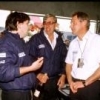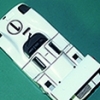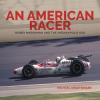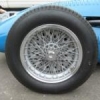The August issue of MotorSport is still on the Titanic en-route to The Colonies so I've not read the rationale for their selection of the Lotus 49 as 'The Greatest Racer of the Century' yet, but the cynical may see it as a Lotus 43 with a decent engine, what an engine of course...
My 'greatest car of the last 100 years' would be skewed in the direction of successful cars that had enduring technical merit, set standards that others followed, or still follow.
Using MotorSport's decade by decade approach:
1910s
Peugeot's 1912-14 L76 et al twin-cam, four-valve powered GP cars courtesy of Ernest Henry and Les Charlatans. Engines, sorry, Power Units, still have these features
1920s
Fiat 805 2-litre, twin-cam, two-valve, supercharged straight eights 'set the GP template' (exceptions duly noted) until the dawn of the 1950s
Fiat engineering diaspora influenced racing for decades to come
1930s
Good old Adolf and his Take Over Der World thingy. Take your pick of the Silver Arrows, maybe the 1938-39 W154/W154-163 for me.
The point to be taken is bottomless-pit budgets soundly spent
1940s
Nothing springs to mind
1950s
John and Charlie Cooper tipped the world upside down with budgets to make Der Deutschlanders piss themselves with laughter as they downed another Shöfferhofer Hefeweizen (my favourite brew). Hard to pick one Cooper but lets say the T45/51 Climax FPF's of varying capacity. Coopers changed the racing car paradigm forever
Honorable mentions to the Mercedes Benz W196/W196S duo, Jaguar D-Type and Lancia D50, with the latter the ultimate expression of the front-engined GP car? V8 used as a structural stressed element, butch spaceframe, low, squat, short with low polar-moment, it only lacked IRS. That Jano chap was ex-Fiat of course.
1960s
It has to be Chapman's monocoque Lotus 25/33/39. Every monocoque racing car is related thereto.
The 1970 Lotus 72 is related to the 1968 Lotus 56: wedge side-rad aero, 4-WD, inboard brakes, P&W gas turbine et al, the 56 gets an hon mention from me. So too do Jim Hall's - and Chevrolet R&D's - Chaparrals and their deployment of wings years before the GP-Johnnies caught up. Arguably wings provided The Biggest 1960s Performance Gain.
Monocoques were generally faster and safer than spaceframes, Porsche wins so equipped in the 1970s duly noted.
1970s
Chapman - and Peter Wright and others - again. The Lotus 78/79 'started' the ground effect and related aero era we all enjoy (sic) today. Epochal cars with continuing enduring influence.
1980s
The ballsy carbon-fibre monocoque Ron Dennis/John Barnard McLaren MP4/1 Ford. Every elite level single-seater and sportscar has been so-equipped since, Porsche 956/962 duly noted. Barnard achieved greater speed and driver safety.
1990s
It gets hard as the rule makers f@cked around on an annual basis, but I'll go for the 1992 Williams FW14/14B Renault 3.5 V10: semi-auto tranny (well done Barnard/Ferrari), active suspension (Lotus as pioneers), and ABS, courtesy of Messrs Newey and Dernie.
2000-2020
I'll leave these eras to others.
As the F1 rules became homogenised, standardised and pasteurised this removed most of the technical interest for me. Then the Barnum & Bailey gizmos introduced to spice up the 1.6-litre Eunuch Show finished me off. These days I watch reruns of World Championship Wrestling, gotta love Skull Murphy, Killer Kowalski and Mario Milano...
Cock-on-the-block time.
I think for me it's John and Charlie Cooper's enterprise in sticking the engine behind the driver. So the Cooper T45/51. It's in the middle of our period, the 1950s, and certainly Cooper changed racing forever. They weren't the first to do the mid-engined thing of course, but made it work rather well. Lotus 25 in second place, and Lotus 78/79 third...So, a fundamental design layout paradigm change in first place, an enduring chassis innovation in second and an enduring aero innovation in third.
Thoughts folks?
m
Edited by MarkBisset, 15 July 2024 - 07:06.






























